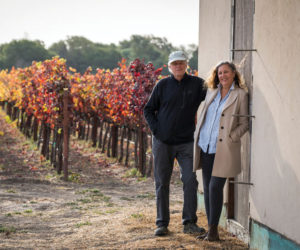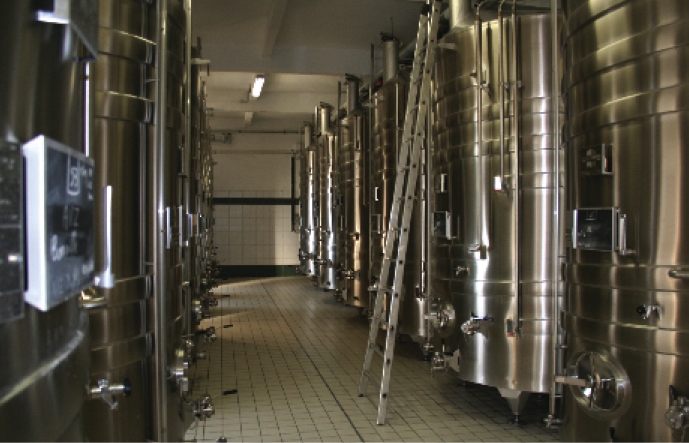
I started with blueberry wine, which won medals in several national competitions, and have since moved on to a variety of fruit wines, and of course, growing grapes. After planting an experimental patch of Cabernet Franc three years ago, this year 250 Sauvignon Blanc, Chardonnay and Cabernet Franc vines were planted, with 250 more slated for next spring.
My decision to go from a home winemaking operation to a commercial operation took place, in part, because of my involvement with a blossoming group of winemakers and grape growers in the region. Kentucky winemaking and grape growing dates back to the late 1700s, when the first commercial winery in the United States was formed by Jean-Jacques Dufour on the Kentucky River, just south of Lexington.
For those of you who are interested in winemaking history, some cool information on this winery can be found online at (www.wineloverspage.com/wines/kyind.shtml and www.kyvineyardsociety.org/History.htm). Kentucky is also home to the oldest vineyard society in the U.S., the Kentucky Vineyard Society, which dates back to 1798. As part of a resurgence and interest in the Commonwealth’s winemaking tradition, I was one of the founding members of the Northern Kentucky Vintners & Grape Growers Association, of which I’m a board member.
The group supports the burgeoning wine industry by providing a network for local winemakers, holding short courses for those involved in both viticulture and enology. It also partners with the University of Kentucky’s College of Agriculture Extension Offices to promote education and support.
The learning curve is very challenging. It is enough to just learn about the proper care of the grapes. Once you get a handle on that, you need to figure out the business and winemaking side. Moving from buckets and carboys to stainless tanks and filtering systems, bottling, labeling, marketing and branding. There is also the legal side — your business license and the application process from the state for a license to make the wine and sell it. I feel confident, though, that this will be a successful venture!
Plans to broaden my winemaking knowledge through a series of courses offered by UC Davis are also on the table. I hope to have the application process completed in time to have my first commercially produced vintages available in 2005, but realize that the wheels of bureaucracy turn slowly and it may be 2006 before that happens. I also plan to donate a portion of the proceeds from each bottle sold to local animal shelters’ spay and neuter program. Until then, I will continue to nurture the vineyard and prepare for the future of one of one of Kentucky’s newest wineries — featuring purrr-fectly wonderful locally grown grapes.




